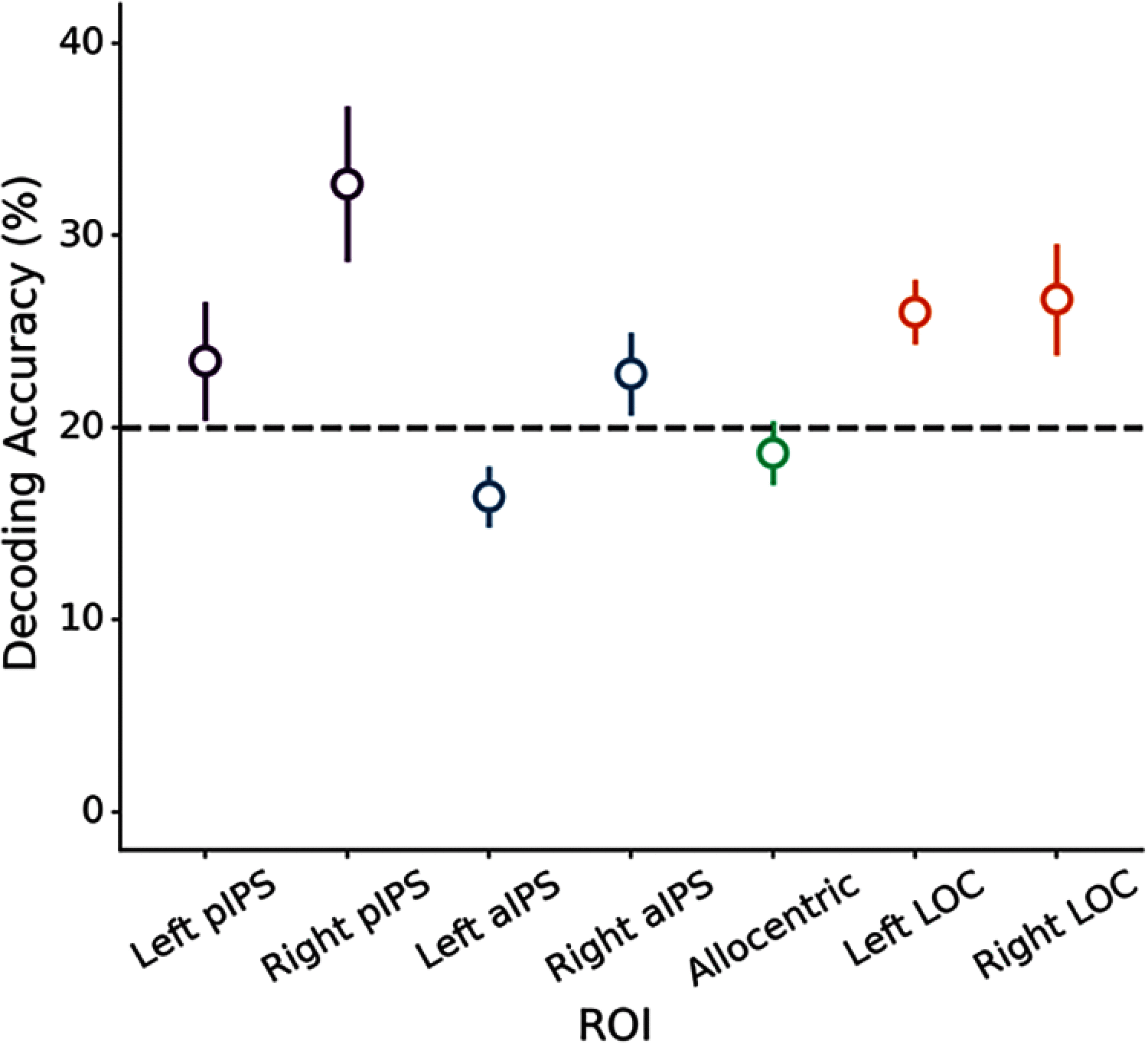The Dorsal Visual Pathway Represents Object-Centered Spatial Relations for Object Recognition
- PMID: 35508386
- PMCID: PMC9186804
- DOI: 10.1523/JNEUROSCI.2257-21.2022
The Dorsal Visual Pathway Represents Object-Centered Spatial Relations for Object Recognition
Abstract
Although there is mounting evidence that input from the dorsal visual pathway is crucial for object processes in the ventral pathway, the specific functional contributions of dorsal cortex to these processes remain poorly understood. Here, we hypothesized that dorsal cortex computes the spatial relations among an object's parts, a process crucial for forming global shape percepts, and transmits this information to the ventral pathway to support object categorization. Using fMRI with human participants (females and males), we discovered regions in the intraparietal sulcus (IPS) that were selectively involved in computing object-centered part relations. These regions exhibited task-dependent functional and effective connectivity with ventral cortex, and were distinct from other dorsal regions, such as those representing allocentric relations, 3D shape, and tools. In a subsequent experiment, we found that the multivariate response of posterior (p)IPS, defined on the basis of part-relations, could be used to decode object category at levels comparable to ventral object regions. Moreover, mediation and multivariate effective connectivity analyses further suggested that IPS may account for representations of part relations in the ventral pathway. Together, our results highlight specific contributions of the dorsal visual pathway to object recognition. We suggest that dorsal cortex is a crucial source of input to the ventral pathway and may support the ability to categorize objects on the basis of global shape.SIGNIFICANCE STATEMENT Humans categorize novel objects rapidly and effortlessly. Such categorization is achieved by representing an object's global shape structure, that is, the relations among object parts. Yet, despite their importance, it is unclear how part relations are represented neurally. Here, we hypothesized that object-centered part relations may be computed by the dorsal visual pathway, which is typically implicated in visuospatial processing. Using fMRI, we identified regions selective for the part relations in dorsal cortex. We found that these regions can support object categorization, and even mediate representations of part relations in the ventral pathway, the region typically thought to support object categorization. Together, these findings shed light on the broader network of brain regions that support object categorization.
Keywords: dorsal stream; object recognition; shape perception; two visual streams; ventral stream; visual cortex.
Copyright © 2022 the authors.
Figures












References
-
- Ayzenberg V, Lourenco SF (2021) The shape skeleton supports one-shot categorization in human infants: behavioral and computational evidence. PsyArxiv
Publication types
MeSH terms
Grants and funding
LinkOut - more resources
Full Text Sources
